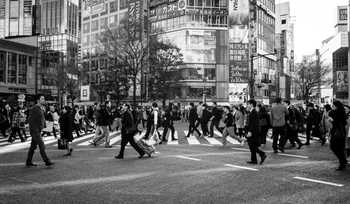Starting September 26, protests carried out by a large number of pro-democracy activists led by the Occupy Central Movement (OCM) and the Hong Kong Federation of Students (HKFS) took place in Hong Kong, People’s Republic of China. These protests have resulted in the blockade of roads, disruption of bus and tram services, and closure of government offices and schools.
The affected areas include: the Admiralty district, the Central and Wan Chai districts, Causeway Bay, Mong Kok, Nathan Road and Argyle Street, Tai Hang and Stubb roads, and Canton road in Tsim Sha Tsui in Kowloon. The demonstrations attracted as many as 200, 000 people when it started. There were also reports of clashes between protesters and police during the demonstrations. The demands of the protestors include: introduction of democratic reforms in Hong Kong, the right to nominate candidates for the 2017 elections and the resignation of Leung Chun-ying, chief executive of the Hong Kong Special Administrative Region (SAR).
Present situation
The situation remains uncertain at the moment; however, the number of protestors encamping at Admiralty, Causeway Bay and Mong Kok has reduced in the last few days. Few demonstrators continue to remain at the above sites. They started dwindling after the city’s leader, Leung, told demonstrators to disperse by October 6. Leung said he would “take all necessary actions to restore social order” if the protesters had not cleared the way for government employees to return to work. In the meanwhile, protest leaders and the city’s government have agreed to organize two rounds of talks to end the impasse. The first round of talks will start at 1600 local time on October 10 and will focus on the constitutional basis for political-system changes. The second round of talks will be on legal requirements.
Moving forward
With the negotiations scheduled, tensions have eased at various protesting sites. However, failure of the talks likely will result in further civil disobedience in the coming days. At the same time, protest leaders have expressed doubt about any outcome from the impending negotiations. The protest leaders indicated that demonstrators likely will continue to remain at Admiralty, Causeway Bay and Mong Kok despite the dwindling number of protestors to put pressure on the government. Lester Shum, vice secretary of the HKFS, said “The government has no sincerity. Political problems need to be resolved by political means, and government should not use tricks to play us again.” In the short term, protests by pro-democracy activists likely will continue in Hong Kong.
Impact on business
If the talks remain inconclusive, an increase in the number of demonstrators at the present encampment sites is likely. In that case, Beijing likely will put pressure on the city authorities to crackdown harder in order to put an end to the protests. Clashes may erupt between demonstrators and police if the latter try to disperse agitated crowds forcefully. Authorities may close government offices, markets, malls and business establishments to avoid any untoward incidents. They may also seal off major arteries within the city and impose traffic diversions, which will affect movement of public and private vehicles. Disruption of the city’s transport system, including passenger cars, buses and tram services, also remain possible during demonstrations. Other businesses such as the retail and the tourism industry likely will get affected as the peak season for tourists begins in November.
Recommendations
Pinkerton suggests clients having operations in Hong Kong to review contingency measures and expect delays in sending or receiving cargo due to possible blockage of major arteries if protests intensify. Those businesses located in the proximity of the encampment sites of Admiralty district, Causeway Bay and Mong Kok should prepare their personnel. These preparations should include the potential need to close quickly, secure offices and stores, and enable personnel to leave the area safely.
This post came from one of our Ad Hoc Reports.





